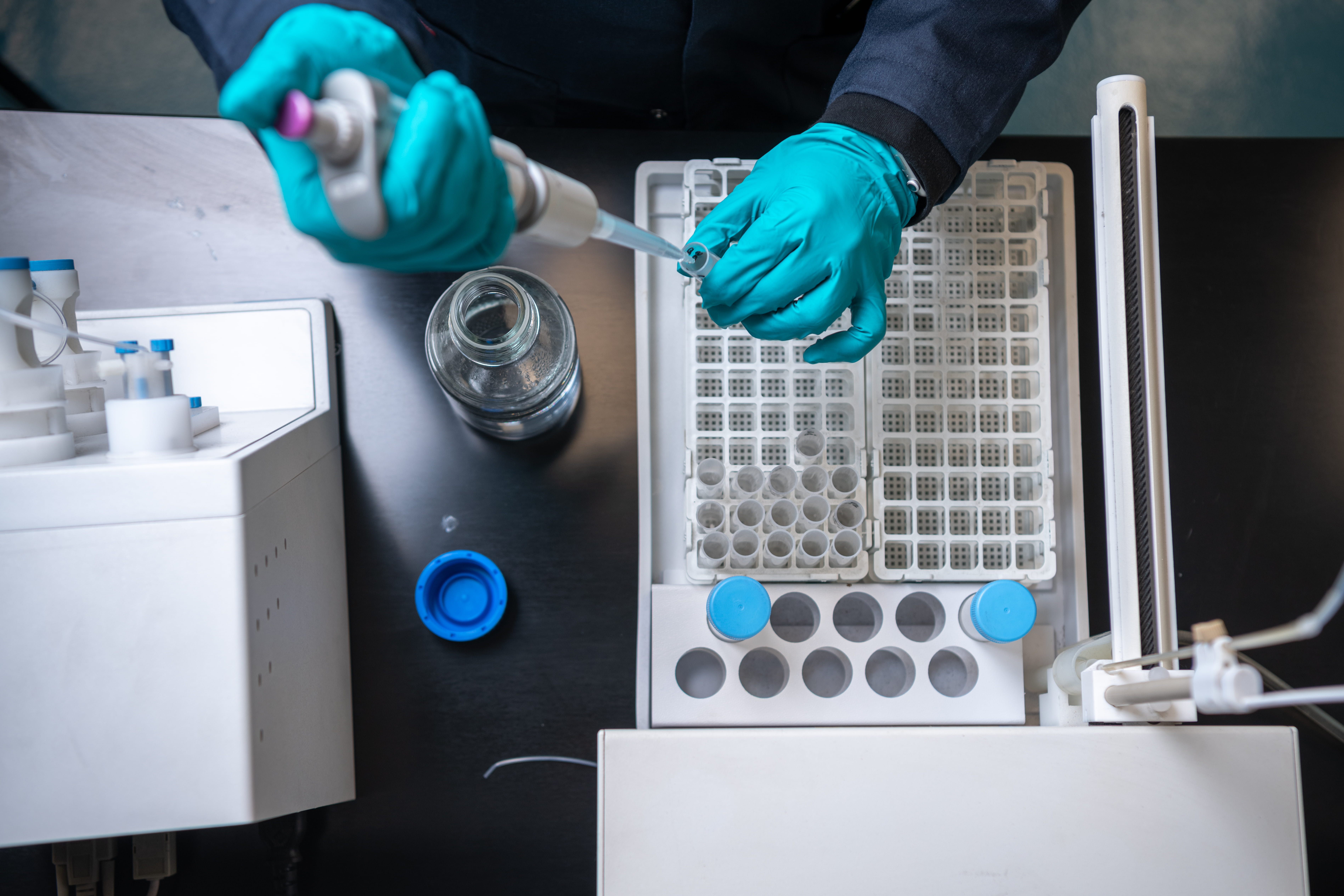
Crude oil to chemicals
Together with SABIC, Aramco is working to commercialize innovative crude to chemicals (C2C) technologies.
Our C2C technologies aim to remove or streamline several conventional industrial processes, resulting in chemicals that are less expensive to produce, while at the same time reducing the carbon footprint associated with this use of our oil.
For those who dwell outside the chemicals world, the program’s objective sounds relatively simple — the direct and enhanced conversion of crude oil to chemicals. But chemical engineers and chemists know the reality behind this seemingly straightforward proposition. And at Aramco's Research and Innovation Complex (RIC — formerly R&DC) in Dhahran, our scientists are determined to break new ground.
Research hub
Inside RIC, the expansive research facility at our Dhahran headquarters, our scientists are busy at work. Some are engrossed in fuel technology research, while others are immersed in developing the combustion engines of the future.
Whiteboards are covered in complex formulas — the inner thoughts of some of our brightest minds. With a diverse research agenda spanning sustainability, Midstream and Downstream, here technology moves fast.
To help reach our C2C goal a host of collaborations, acquisitions, and joint ventures have already taken place. In parallel, an ambitious technology strategy is in full swing at the center.
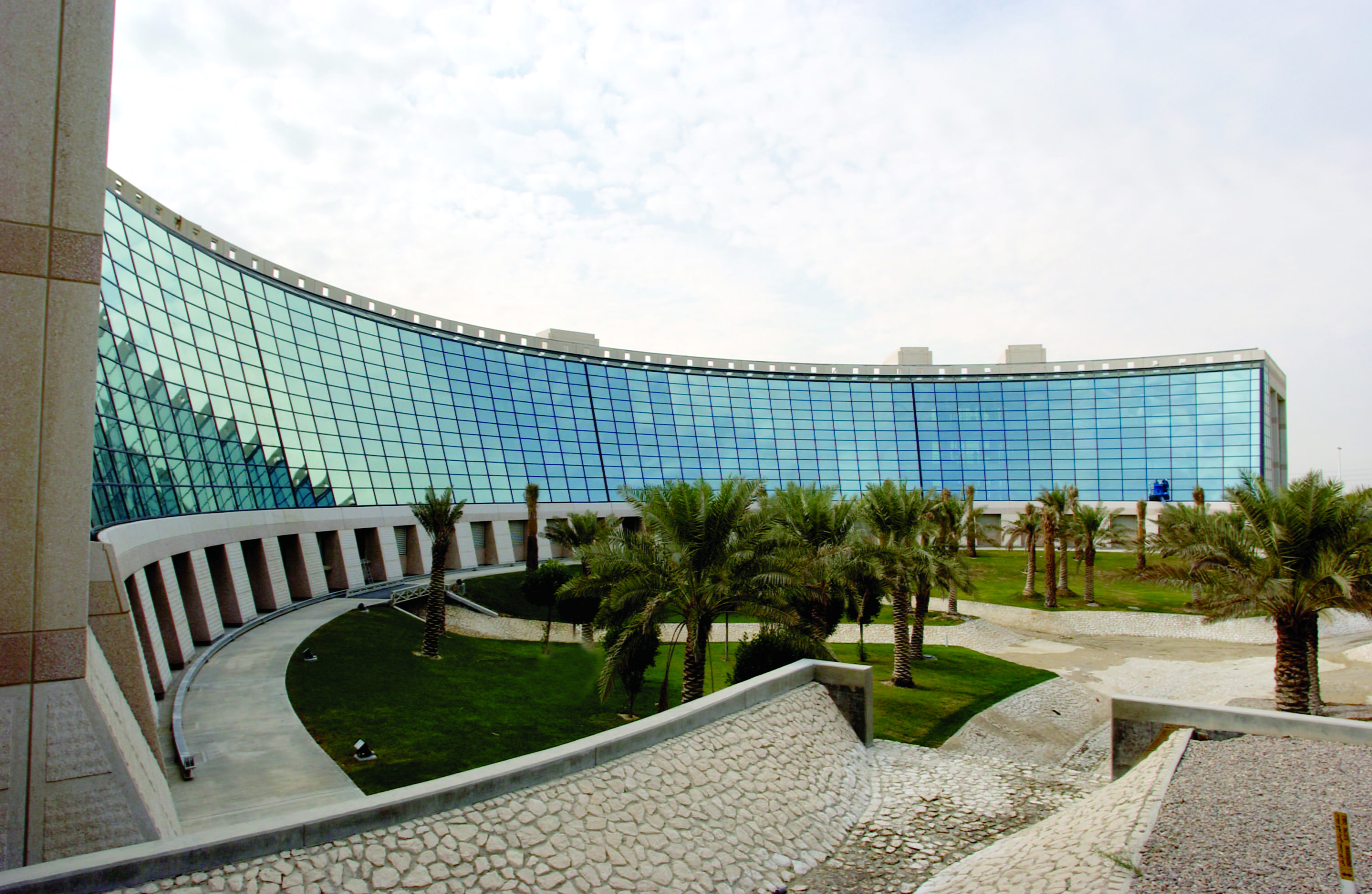
The Research & Innovation Complex (formerly R&DC), located at our headquarters in Dhahran, Saudi Arabia.
We are breaking new ground by unraveling the chemistry behind crude oil's composition and its conversion into chemicals.
The current process
Typically processed in an oil refinery, crude oil is transformed into a variety of fractions such as naphtha, diesel, kerosene, gas oil, and high-boiling residue.
Some of these fractionated products are then used as feedstocks for conventional petrochemical production. But it’s costly. The process requires substantial, expensive, and energy-intensive refining steps.
One approach to improve the process is by better-integrating current refining processes to yield more chemical products per barrel of oil. This involves tweaking existing, proven technologies and processes in an integrated refining complex to raise the chemical production level per barrel of oil from the regular 8% to 12% yield, to up to around 50%.
The Aramco and SABIC crude oil to chemicals partnership is a good example of this approach. But what if the yield could be increased even more with fewer processes?
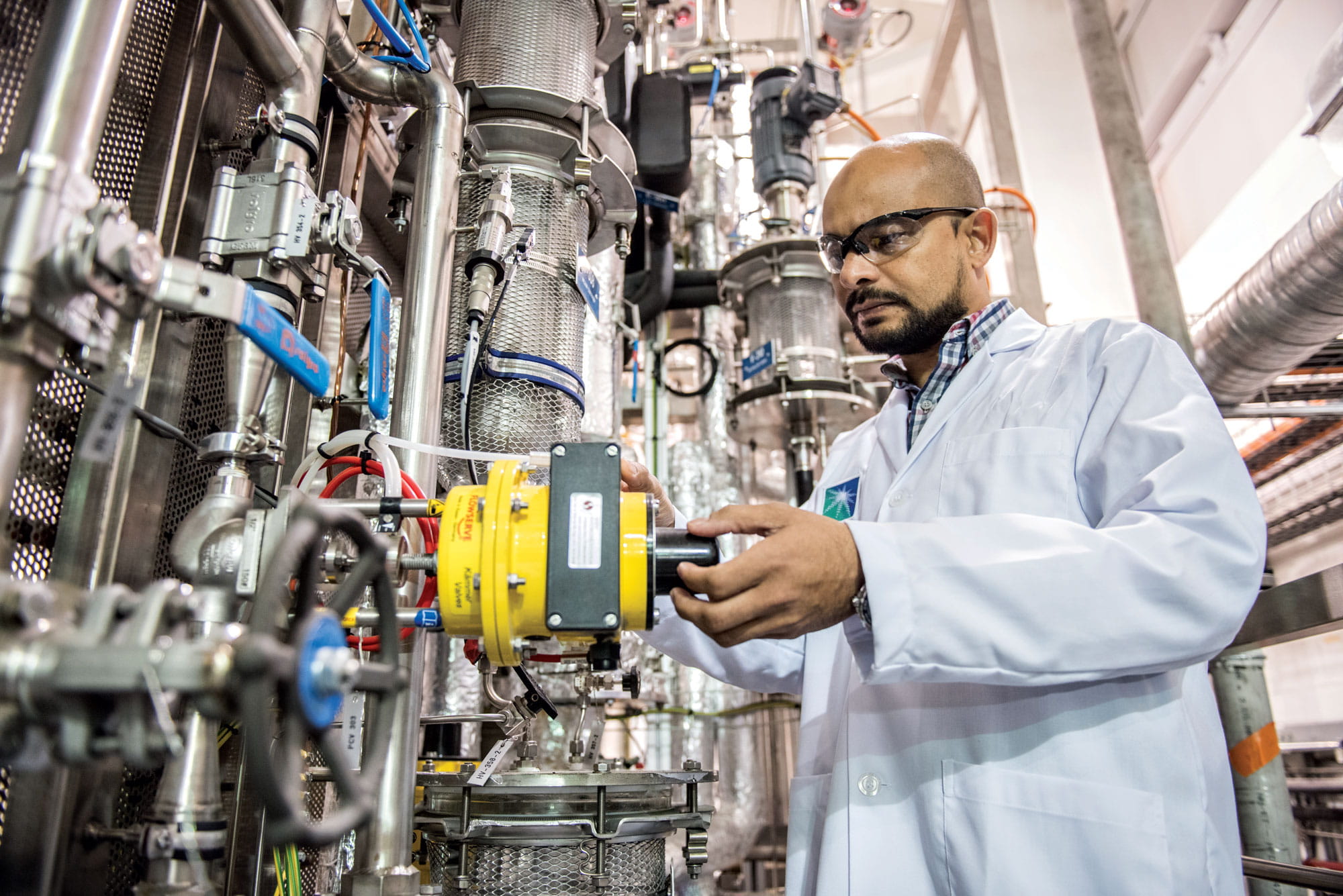
Scientist Kareemuddin M. Shaikh checks the pressure control valve for the pilot plant used for one of Aramco's crude to chemicals technologies.
To crack the code, our engineers and scientists are pursuing multiple research strategies and technologies with a research focus on thermal and catalytic routes to convert crude oil to chemicals. Each research track has its own special qualities and intricacies, and is at a different stage in the development process.
Partnering for success
Of the research tracks, the most advanced is the Thermal Crude to Chemicals (TC2CTM) program.
In 2018, Aramco entered into a Joint Development Agreement with U.S.-based leading technology provider CB&I (now McDermott) and Chevron Lummus Global (CLG) to further accelerate the development and demonstration of the technology.
This collaboration aims to advance this technology toward commercialization and our team is working to demonstrate the technology on a larger scale at CLG’s Richmond Technology Center.
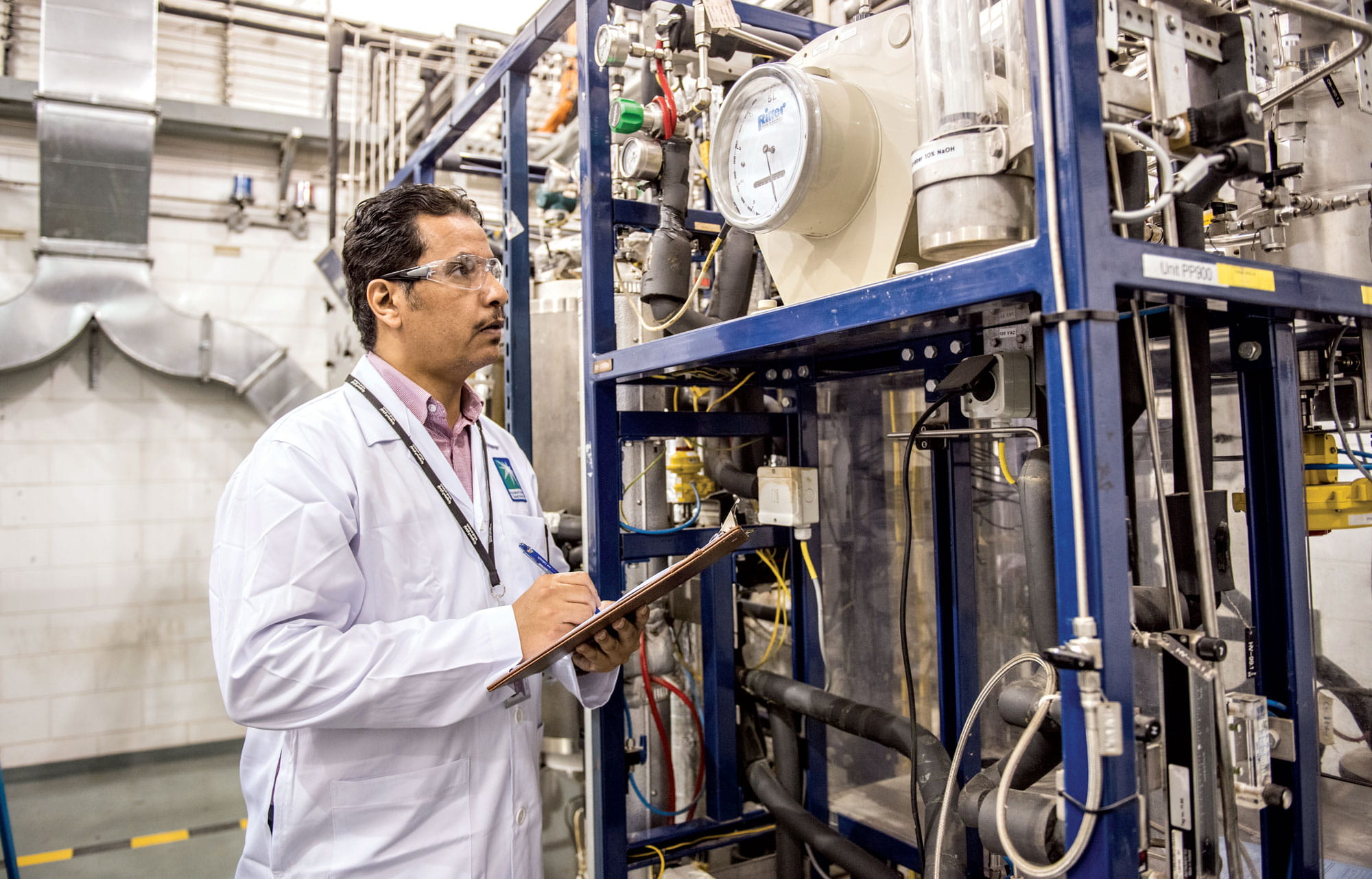
At one of the C2C laboratories, lab technician Duhaiman U. Yami monitors the wet test gas meter on a pilot plant for the crude conditioning step of the Thermal Crude to Chemicals research track.
To the C2C team, two key factors are critical in ensuring the success of the program — internal support and global partnering. Partnerships from within the company, particularly with the Chemicals business are crucial. Alignment with them in terms of technology, engineering, and economics is critical as the process moves forward.
Global partnering is key. By leveraging other facilities and knowledge, we can compress our timelines, while, at the same time, building lasting relationships that will enhance our business.
In pursuit of the catalyst
The common theme that binds the different research tracks in C2C together is the pursuit of the catalyst.
The purpose of the catalyst is to mix in with the hydrocarbons and initiate the reactions that lead to the production of chemicals, and it’s at the core of the research being carried out at RIC.
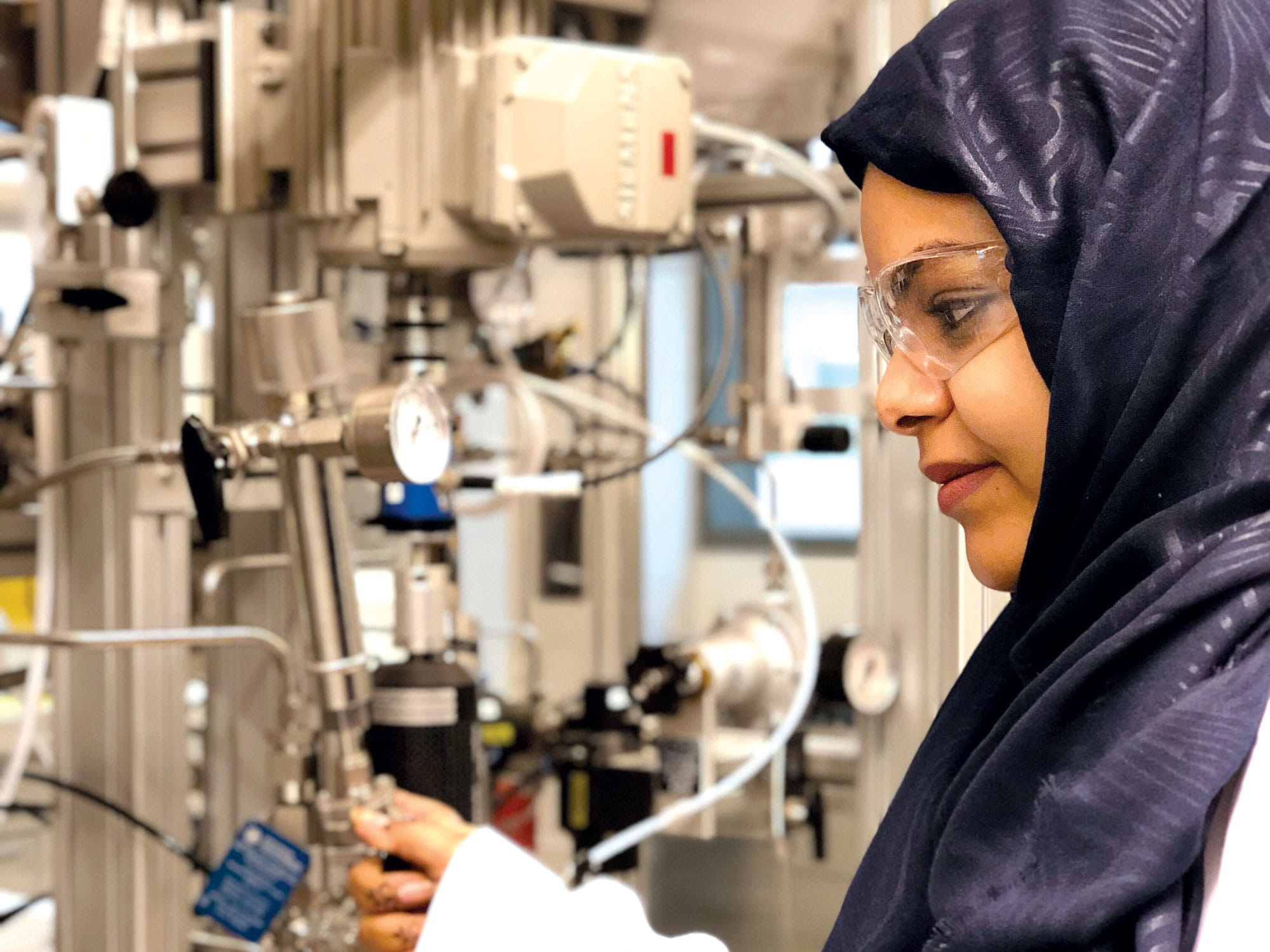
Ola Ali is working with the KAUST research team on developing a catalyst that can convert crude oil to chemicals in one step.
Of all the research tracks in the C2C program, the most ambitious is being conducted in conjunction with the King Abdullah University of Science and Technology (KAUST). Aramco scientist Ola Ali, who is located at the company’s research center at KAUST, is pursuing the Holy Grail in C2C research — creating a catalytic process that can upgrade and directly convert any crude type into chemicals in a single step.
Powering forward
If progress in the projects needed a gauge of measurement, we can look to the growing number of Aramco patents in the field of C2C.
As team members continue with their cutting-edge research and collaboration with partners, they share a common vision for the future, and down the road, they envision that major discoveries and breakthroughs will occur in the one-step direct conversion route.
Aramco’s Liquid to Chemicals strategy
Our ongoing C2C research is part of the Company’s wider Liquids to Chemicals strategy. Aramco continues to grow its liquids-to-chemicals business, with a goal of increasing our capacity in petrochemical producing complexes to up to four million barrels per day by 2030 and, as of the end of 2024, we’ve so far achieved approximately 45% of this target.

Chemicals
Unlocking the greater potential value inherent in our hydrocarbon resources lies at the heart of our chemicals strategy.